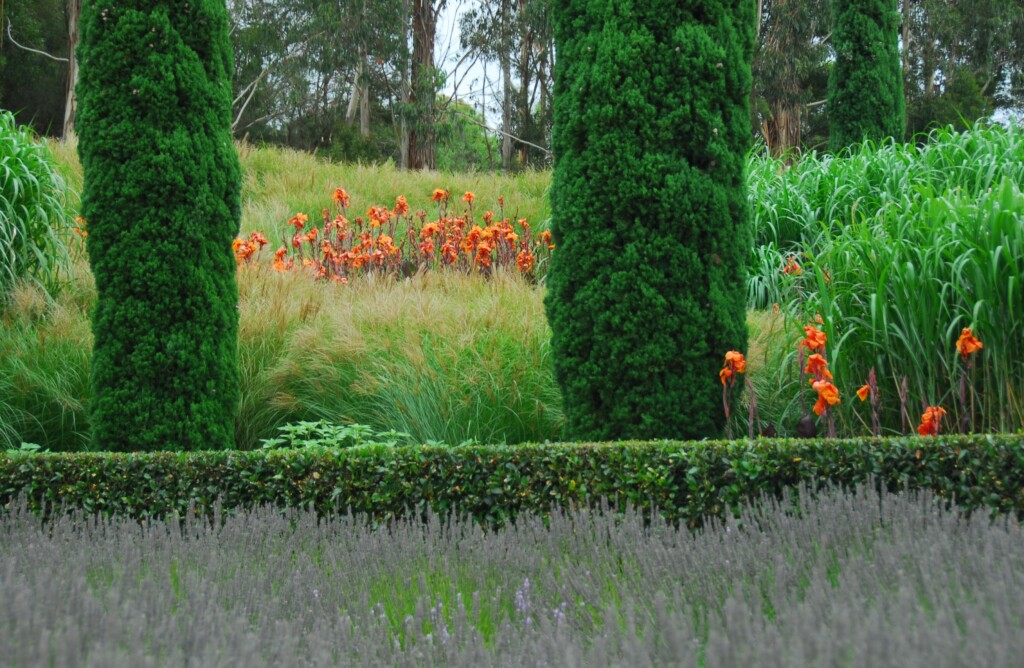Writing that piece last week about how useful it would be to have info about the extent to which a plant’s performance is compromised by drought (and not just whether it’ll survive the challenge) got me thinking about a few other key aspects of drought that I wish we all knew more about.
One is the effect of dry at different times of year.
In my coolish climate, late summer provides the best of weather for sitting out in the evenings, so my planting leans heavily on late summer perennials. Independent of weather conditions, it’s long been understood that in pushing the peak of your perennial display as late as possible in the season, you maximise the very appealing build up to flowering, and minimise the often unappealing post-flowering decline. But it so happens that a lot of late flowering perennials come from tall-grass prairies, which have reasonable spring and summer rainfall. Only by getting that can they continue to build their tall structure over summer. For this kind of cyclical pattern, in which plants can shoot up to 3m over a single growing season, water=growth. So my late-flowering perennial regime is to some extent water-dependent, or is, at least, drought-vulnerable.

Having said that, late summer or autumn dry is going to be the least damaging to its performance. By then, everything has done all of its bulking up, achieved its height, and set flower buds. Flowering will often proceed, at least adequately, with little or no water. The same could not be said, however, following spring or early summer dry.
If my garden was made up of drought tolerant evergreen shrubs, a dry spring or early summer would have very little detrimental effect. It just might be that the shrubs don’t put on much new growth for that season. My hedge of Viburnum tinus is a perfect example. Over several moderately dry springs, it simply didn’t put on any new growth. But you’d never know, to look at it, that it was stressed in any way.
But my garden isn’t evergreen-based. And spring dry is therefore devastating. Late flowering grasses like Miscanthus will often give up trying to flower if the spring and summer are dry, and at worst, they will only achieve about half their normal height. Curiously, they can still look good, and can be quite worthwhile, as long as you can ignore what they’re capable of at best. And you only get away with the consolation display if there’s no moisture differential over their planted space, so they consistency underperform. The effect is at its worst when some flower and some don’t.

For this reason, I’ve long stated if summer dry is unavoidable, it’s best to avoid all of the later flowering grasses. The early flowerers, like Calamagrostis ‘Karl Foerster’, Stipa gigantea and our Aussie Poa labillardieri are not compromised by summer drought, as they’ve done all their bulking and extension growth before then. The former two would, I’d imagine, be compromised by really severe spring drought, but so far it’s never been severe enough here to faintly taint their performance.
It all depends on when, in their growing cycle, they bulk up.
The same rule works for really tough stuff like Cannas. During a dry spring or early summer, these will suffer in both height and bulk, and therefore subsequent flowering duration and intensity. Conversely, as long as they get that early growth from spring moisture, they seem capable of flowering long and hard through summer dry. So if you had any water to give them, you’d want to provide it in spring and early summer. There’s no point watering at the end of the season, if they’re already droughted.

I have the added challenge (which no doubt your climate applies in some other way. I’m firmly of the opinion – since my mental health depends on it – that all climates are equally difficult to garden in, when all things are considered) that I don’t know if I’m going to have enough water in storage for late summer until it’s really too late for it to have any material effect. This year, after a benign start to the season, we’ve had a few challenging weeks of dry, and it’s only now that it’s clear that I have enough in storage to start throwing some around. Then I have to decide whether I’d rather have the plants looking revived or retain the bragging rights that I never water, which I’ve previously heavily invested in.
Who knew good gardening could be as much a psychological challenge as an horticultural one?